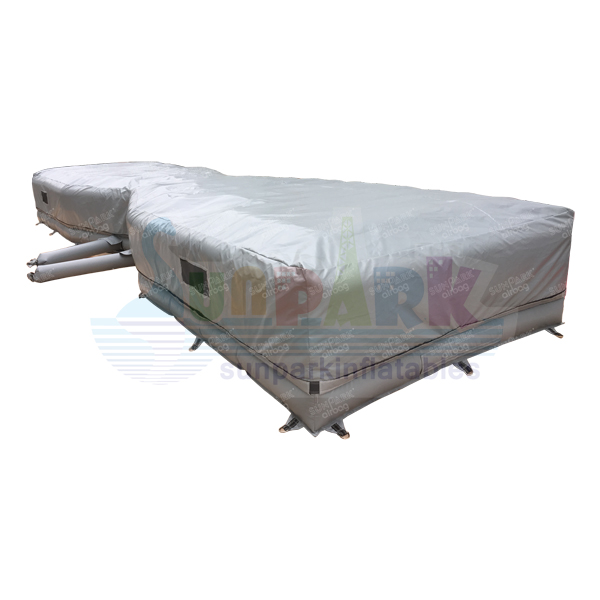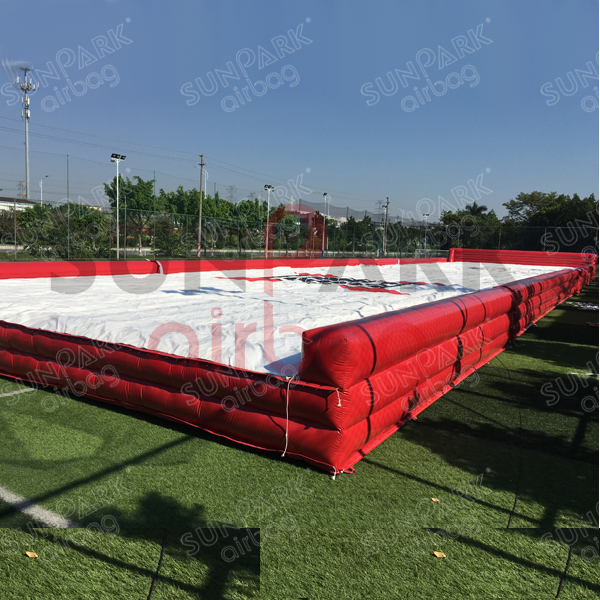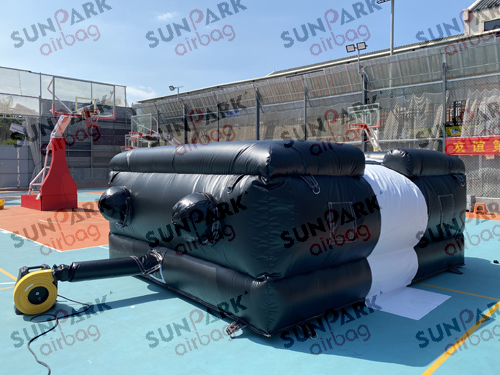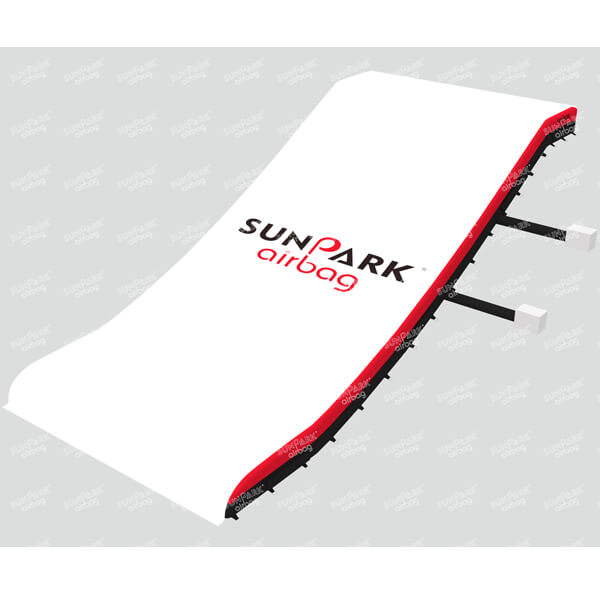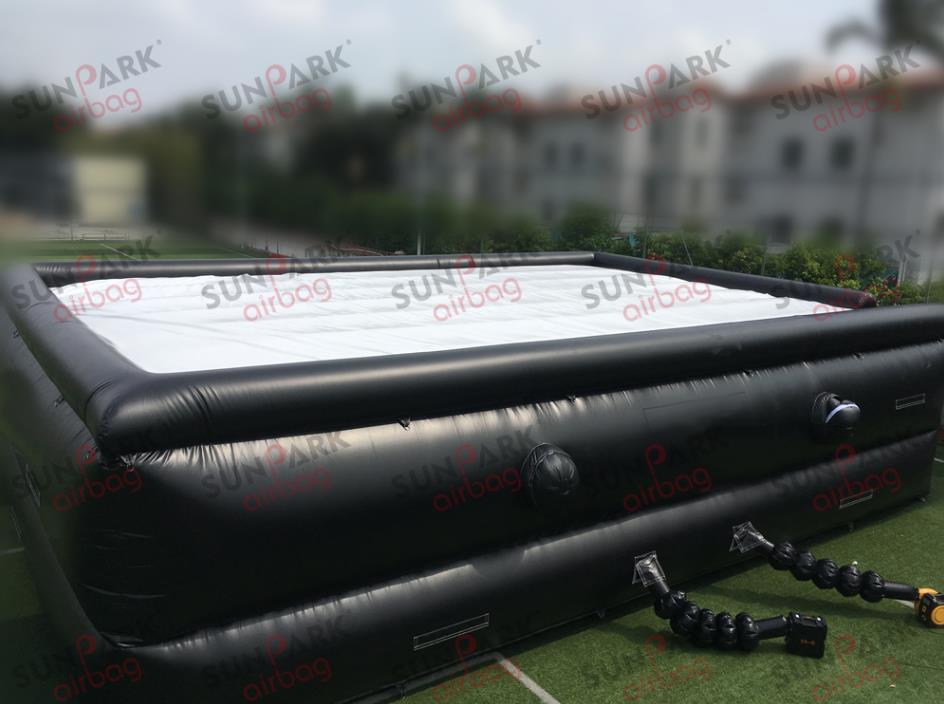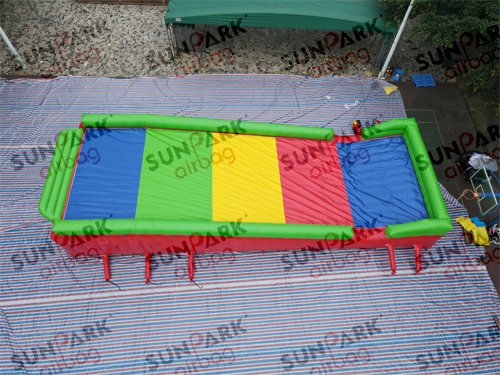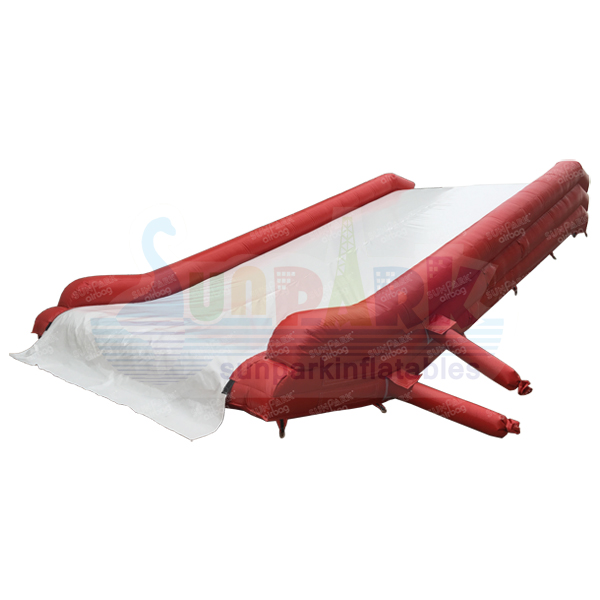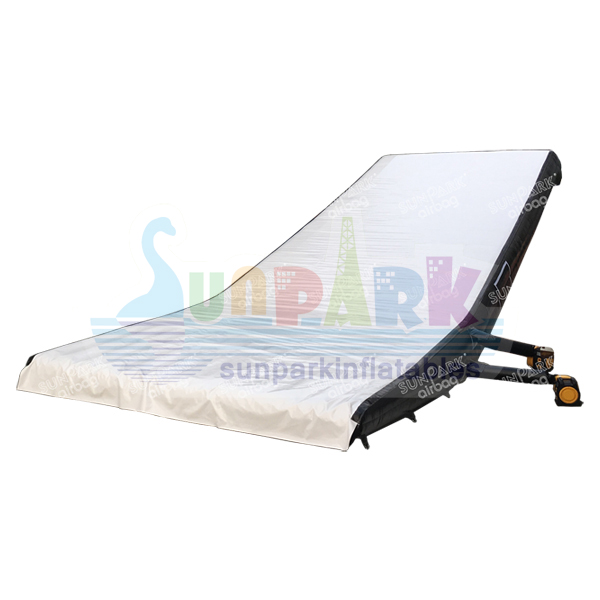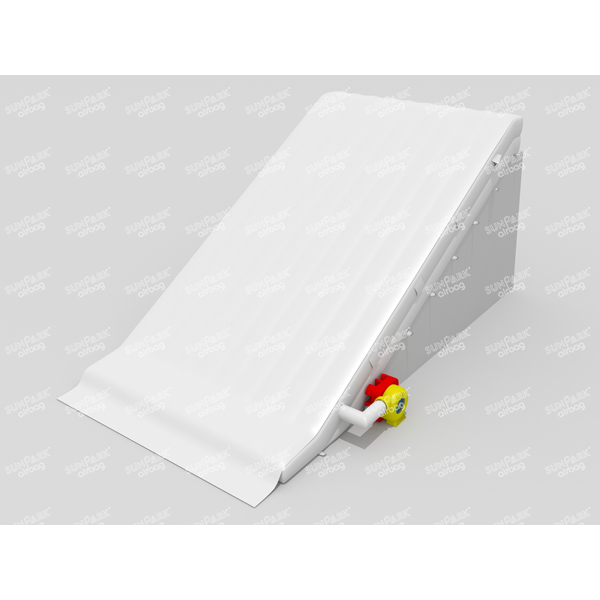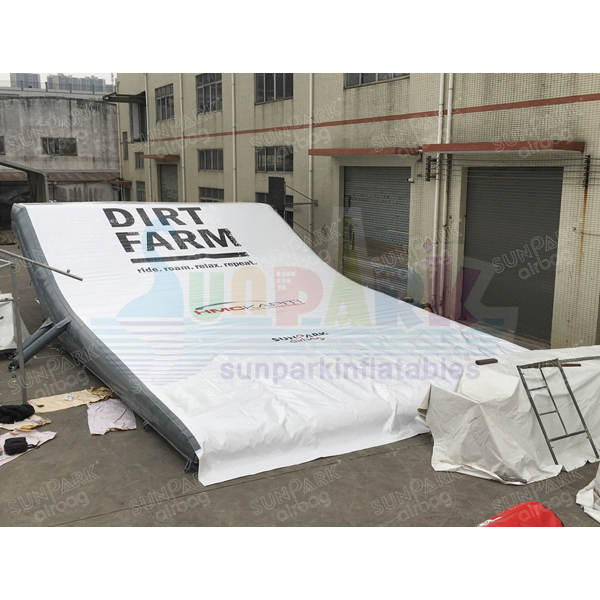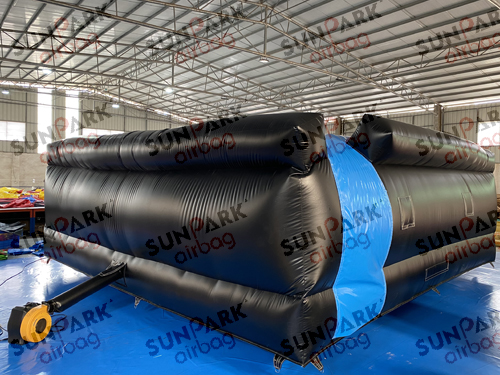1. Introduction — why stunt airbags matter
A stunt airbag is an engineered inflatable landing system designed to absorb and dissipate impact energy safely, repeatably and at scale. For film stunts, FMX and extreme-sports rehearsals, stunt airbags are often the safest, most efficient option for rehearsing high-risk moves and testing new choreography. This article explores the top 5 benefits — energy absorption, faster resets, tunability/customization, repeatability/predictability, and operational advantages (hygiene, cost-of-ownership) — and gives practical, production-ready advice for teams considering a stunt or foam pit airbag. If you want to see product options while you read, visit SunparkAirbag’s Foam Pit Airbag page: https://www.sunparkairbag.com/product/foam-pit-airbag/.
2. Quick orientation — types of airbags and related products

Before diving into benefits, a quick orientation helps:
Stunt airbag (human-rated): Designed for performer falls, actor rehearsals and smaller-height drops. See Sunpark’s stunt product catalog: https://www.sunparkairbag.com/product/stunt-airbag/.
Foam pit airbag (hybrid): Combines foam-pit workflows with inflatable pillars/chambers for high throughput training — product page: https://www.sunparkairbag.com/product/foam-pit-airbag/.
Inflated landing bag (vehicle/FM X-rated): Heavier-duty airbags for motorcycle or vehicle impacts — example: https://www.sunparkairbag.com/product/inflated-landing-bag/.
Trampoline / air-awareness airbags: For low-height air-awareness and progression — https://www.sunparkairbag.com/product/trampoline-airbag/.
Other resources & product hub: https://www.sunparkairbag.com/products/ and planning guidance at https://www.sunparkairbag.com/air-landing/.
Use these product pages to request datasheets, anchor-plans and attenuation graphs from suppliers.
3. Top 5 benefits — executive list
Superior energy absorption and reduced injury risk
Faster reset times — higher productivity for shoots and training
Tunability and customization for diverse stunt profiles
Predictability and repeatability for choreography and camera work
Operational advantages: hygiene, lifecycle cost, and environmental impact
Each benefit is expanded below with practical evidence, what to verify with vendors, and real-world implications.
4. Benefit 1 — Superior energy absorption & reduced injury risk
4.1 Why it matters
The prime objective of any stunt safety device is to reduce the forces transmitted to the performer’s body. Properly engineered stunt airbags distribute and dissipate kinetic energy over time and surface area, lowering peak deceleration and reducing the risk of acute injuries such as spinal compression or traumatic brain injury.
4.2 Engineering features that deliver absorption
Multi-chamber or dual-zone design (catch + safety chambers) spreads deceleration across stages.
Pillar arrays in foam-pit airbags localize energy absorption and reduce the chance of bottoming out.
Controlled venting allows technicians to tune the rate of air escape, shaping how quickly the bag compresses on impact.
4.3 What to ask your vendor
Provide attenuation graphs (deceleration vs fall height and mass).
Confirm maximum safe fall height per configuration.
Show proof of staged-chamber or pillar design (diagrams/specs).
Related internal resources: stunt airbag product: https://www.sunparkairbag.com/product/stunt-airbag/ and foam-pit-airbag: https://www.sunparkairbag.com/product/foam-pit-airbag/.
5. Benefit 2 — Faster reset times = higher productivity
5.1 The production impact
On a film set, time is money. Faster resets mean more takes per day, fewer crew hours spent rearranging equipment, and less downtime between rehearsals and camera setups.
5.2 How stunt airbags speed workflow
Fast re-inflate: Modern blowers re-pressurize a bag in seconds to minutes depending on size.
Ease of egress: Performers exit a bag without digging through foam cubes, which shortens turnaround.
Minimal repositioning: Engineered chambers maintain shape, eliminating frequent manual rearrangement.
5.3 Practical considerations
Ensure blower redundancy (backup blower or generator) for critical shoots.
Confirm re-inflate time with specific model and typical ambient conditions (cold air is denser and affects pressure).
Internal link: check FMX/vehicle-rated landing options: https://www.sunparkairbag.com/product/inflated-landing-bag/.
6. Benefit 3 — Tunability & customization for every stunt
6.1 Why tunability matters
Different stunts have wildly different energy profiles: a human fall from 2–3 m needs a very different catch than a motorcycle backflip or a controlled car rollout. Tunability lets teams adapt one system to many tasks.
6.2 Tunable features
Independent vents: change compression rate for upper vs lower chambers.
Modular sizes: combine modules to widen footprint or increase cushioning depth.
Reinforced zones: add heavier fabric or extra baffles where wheel or vehicle contact is expected.
Branding & covers: cosmetic customization for production continuity.
6.3 What to verify
Provide vendor presets for common stunt types.
Confirm any available vehicle/weight ratings and vehicle impact test data.
Internal link: Sunpark’s stunt and foam-pit ranges show customization options: https://www.sunparkairbag.com/stunt-airbag-jump/ and https://www.sunparkairbag.com/product/foam-pit-airbag/.
7. Benefit 4 — Predictability & repeatability
7.1 The creative advantage
Directors, stunt coordinators and cinematographers need reliable outcomes to frame cameras and block shots. If a landing behaves predictably, you can plan camera moves and safety measures with confidence.
7.2 How airbags enable repeatability
Consistent attenuation curve (same compressive behavior across repeated impacts).
Stable shape & anchors eliminate drifting or tilt between takes.
Controlled egress & exit points streamline camera blocking and camera operator placement.
7.3 Operational practice
Maintain logs of vent settings, environmental conditions and performer weight so teams can reproduce the same feel across days.
Use progressive rehearsals: soft settings for early runs, gradually firming for full-speed takes.
Internal resources: planning and install guidance at https://www.sunparkairbag.com/air-landing/.
8. Benefit 5 — Operational advantages: hygiene, long-term cost & sustainability
8.1 Hygiene and cleaning
Wipeable shells simplify cleaning between takes or sessions — critical in multi-day shoots or public gyms.
Reduced porous materials means fewer trapped contaminants vs. cloth mats or loose foam cubes.
8.2 Lifecycle and cost-of-ownership
Lower consumable waste than foam blocks that need regular replacement.
Patchable shells and replaceable blower parts mean repair rather than replace.
8.3 Environmental & disposal benefits
Fewer foam cubes, less landfill waste; long-lived shells reduce overall resource use.
Internal link (foam-pit hybrid): https://www.sunparkairbag.com/foam-pit-jump-airbag/
9. Comparison table — stunt airbags vs alternatives
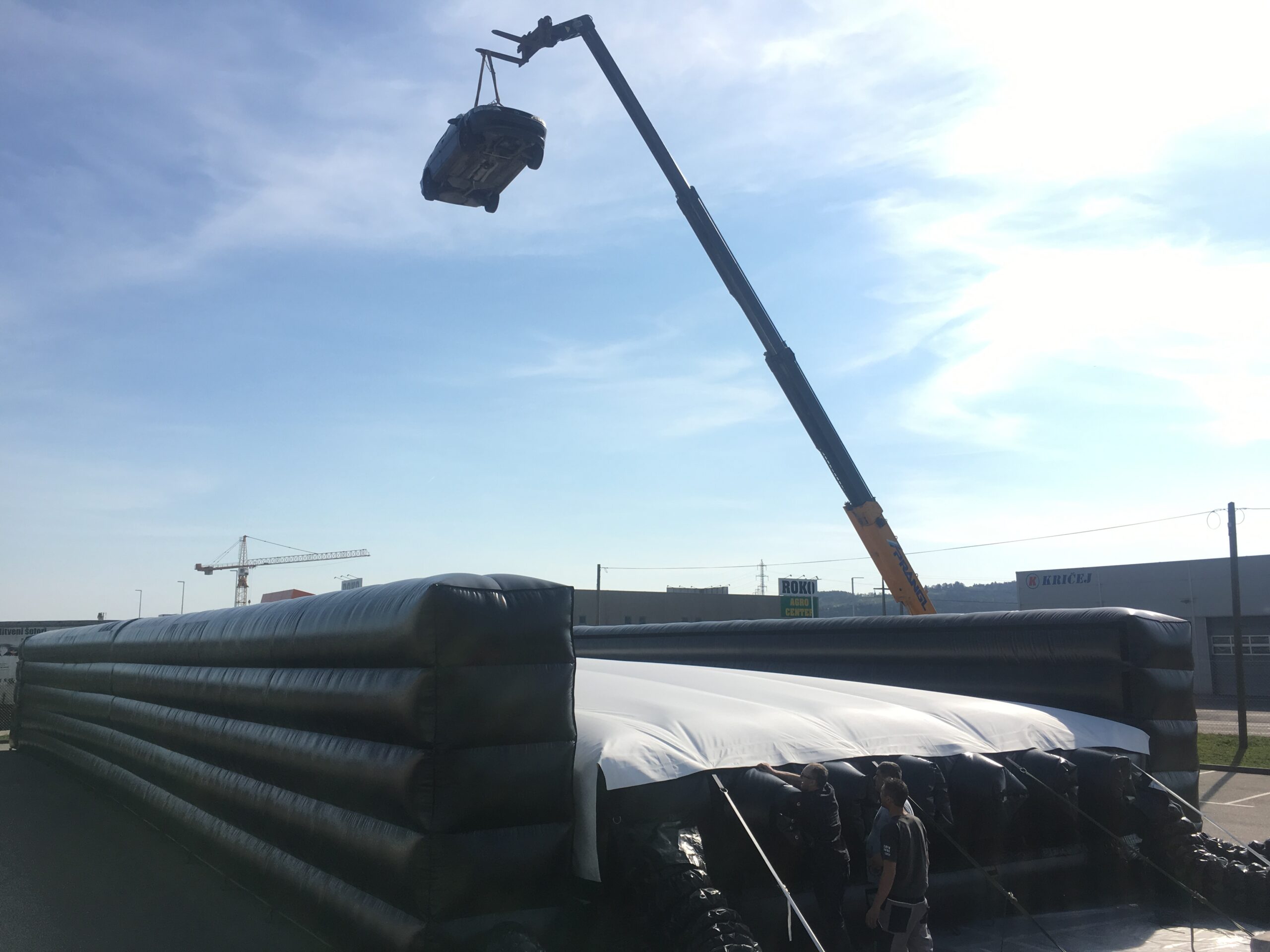
| Criterion | Stunt Airbag (engineered) | Foam Pit (loose cubes) | Crash Mats / Foldable Mats |
|---|---|---|---|
| Energy absorption | High, staged, testable | Variable, degrades | Moderate, localized |
| Reset time | Seconds–minutes | High (manual reset) | Minutes (repositioning) |
| Tunability | Yes (vents, chambers) | No | Limited |
| Repeatability | High | Low (blocks shift) | Medium |
| Throughput | High | Low | Medium |
| Hygiene | Wipeable shells | Poor — porous blocks trap dirt | Cloth covers absorb sweat |
| Vehicle-rated options | Available | Not suited | Rarely suitable |
| Long-term OPEX | Lower (repairable) | Higher (replace cubes) | Medium |
| Best for | Film stunts, FMX, training centers | Low-budget or static demo pits | Small rehearsals, basic training |
10. Safety standards and compliance
When using stunt airbags, align with relevant safety references and industry practices. Consider consulting:
SAG-AFTRA stunt safety resources for film set protocols and union guidance. (SAG-AFTRA site)
OSHA fall-protection guidance for workplace safety where towers or platforms are involved. (https://www.osha.gov)
ASTM practice standards for inflatable devices and impact attenuation (search ASTM F2970 and other related standards).
External authoritative references (examples to cite when you prepare a safety pack):
SAG-AFTRA safety pages / stunt coordination guidance.
OSHA — fall protection and general industry safety: https://www.osha.gov/
ASTM standards information portal: https://www.astm.org/
(Always include vendor-supplied test reports and certificates as part of your safety binder.)
11. On-set / on-site best practices
Site prep: clear, level surface, protective ground sheet and adequate run-in/run-out.
Anchor plan: use the vendor-provided anchor map; increase anchor density in windy/outdoor sites.
Power & blower redundancy: designate primary and backup blowers and test re-inflate cycles during setup.
Trained staff: assign lip marshal, landing marshal and a technical lead for vent/blower adjustments.
Progressive rehearsals: start with softer settings and lower heights; increase only after consistent successful runs.
Incident protocol: medics on standby for high-risk sequences and a documented emergency response plan.
Documentation: keep vent logs, ambient conditions and performer weights to reproduce settings.
Internal links for planning: products hub — https://www.sunparkairbag.com/products/ and specific installation notes at https://www.sunparkairbag.com/air-landing/.
12. Procurement checklist — what to request from suppliers
Technical datasheet (materials, chamber layout, max fall height).
Attenuation test reports (deceleration vs height/mass).
Anchor drawings and wind rating.
Blower specs and redundancy recommendations.
Vehicle-rating documentation (if vehicles or bikes are part of the plan).
Warranty, repair parts and local service/support options.
Case studies or references for similar production types.
SunparkAirbag’s product pages can be used to request these items: https://www.sunparkairbag.com/product/foam-pit-airbag/ and https://www.sunparkairbag.com/product/stunt-airbag/.
13. Real-world scenarios & mini case studies
Scenario A — Film set: actor falling from a window (2–3 m)
A tuned stunt airbag with perimeter bumpers and controlled vents enabled multiple takes while keeping impact forces low and consistent. The production saved crew hours because no foam reset was required between takes.
Scenario B — FMX rider practicing a new trick
A reinforced inflated landing bag (vehicle-rated) absorbed repeated wheel impacts; the rider progressed faster because of repeatable landings and immediate feedback.
Scenario C — Gymnastics academy using hybrid foam-pit airbag
A gymnastics center replaced an aging cube pit with a foam-pit airbag hybrid to reduce cleaning labor and increase class throughput; coaches reported improved skill acquisition speed during camps.
(Quotes and outcomes are anonymized summaries of typical operator feedback; contact SunparkAirbag for full case studies and references.)
14. Maintenance & lifecycle — keep your airbag safe and online
Daily: visual seam checks, blower function, anchor integrity.
Weekly: blower filter cleaning, surface cleaning and vent function tests.
Monthly/seasonal: full seam inspection, pressure test and professional servicing if required.
Storage: deflate fully, dry thoroughly and store in a cool, dry place away from UV when not in use.
Recommended spare parts: patch kit, spare blower filter, blower spare or service plan.
Internal links for related products/parts: https://www.sunparkairbag.com/product/trampoline-airbag/ and https://www.sunparkairbag.com/product/inflated-landing-bag/.
15. Frequently asked questions (FAQ) — concise answers
Q1 — Are stunt airbags safe for vehicle stunts?
Only if the airbag is explicitly vehicle-rated. Confirm mass/speed limits and ask for vehicle-impact test data.
Q2 — How long do airbags take to re-inflate?
Depends on model and blower. Small human-rated bags can re-inflate in seconds; larger vehicle-rated systems may take longer. Always verify with vendor specs.
Q3 — Can airbags replace other safety systems?
Airbags are a crucial element of a layered safety plan but do not replace rigging protocols, spotters or medical preparedness.
Q4 — Are airbags easy to clean on multi-day shoots?
Yes — wipeable shells drastically reduce cleaning time compared to porous mats or foam cubes.

